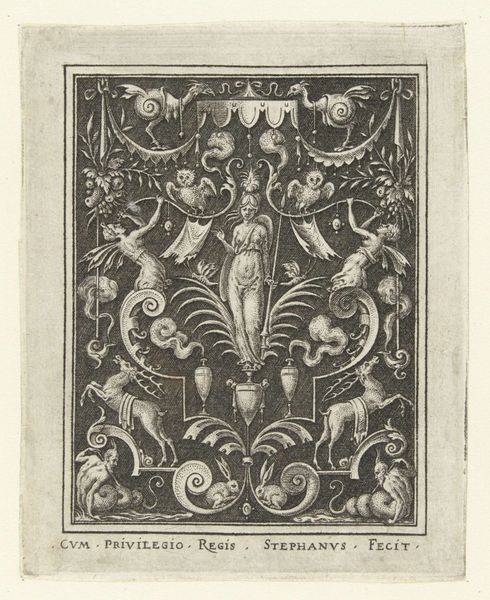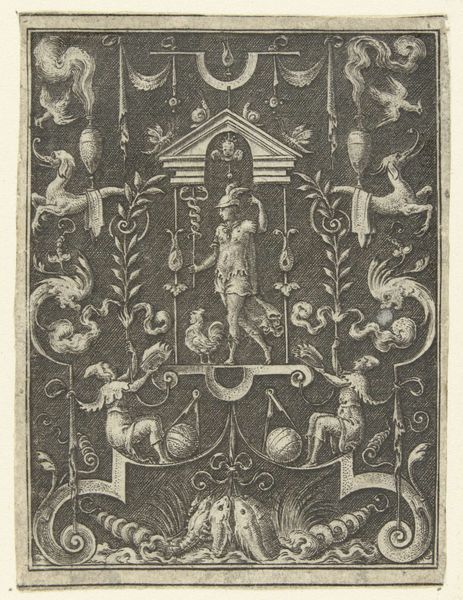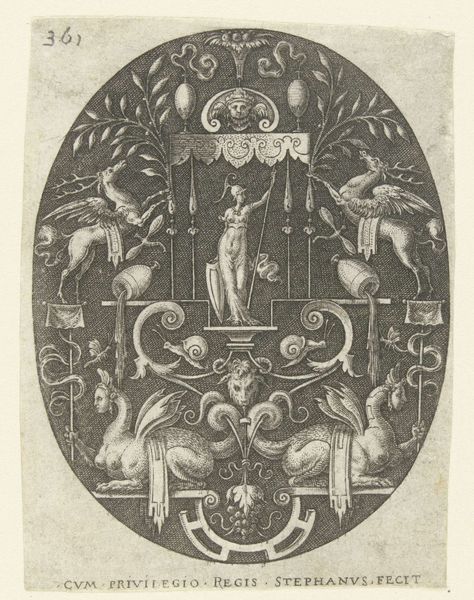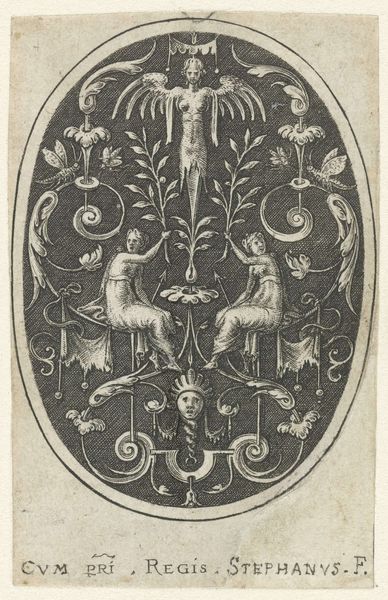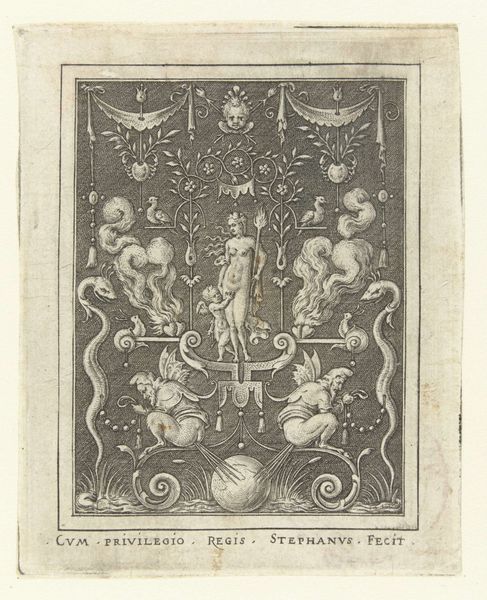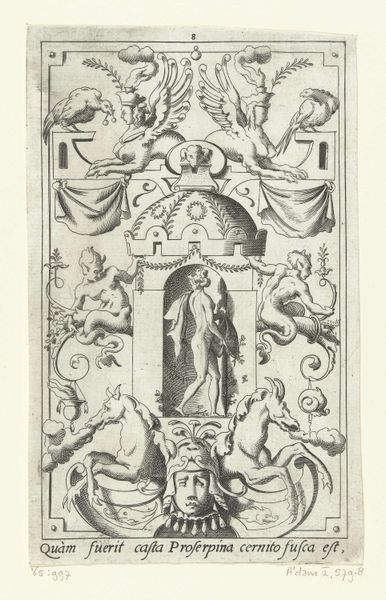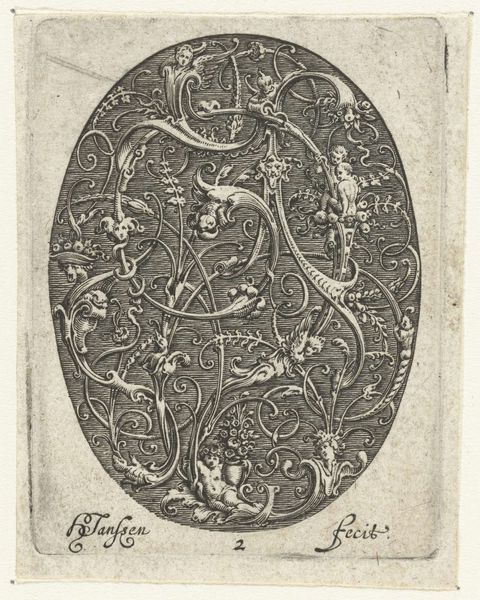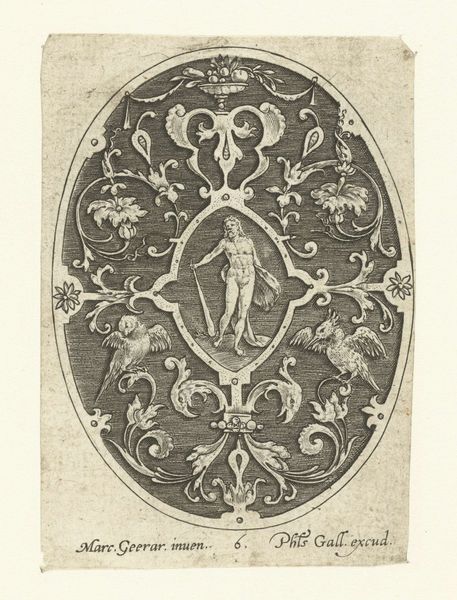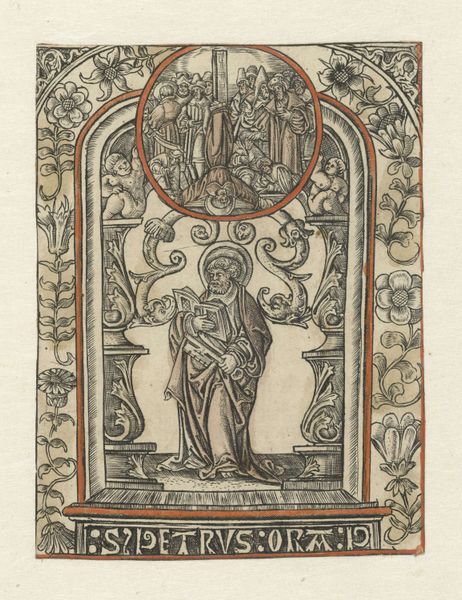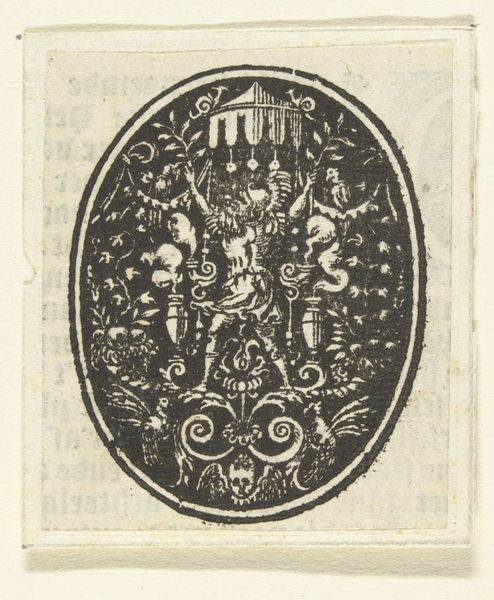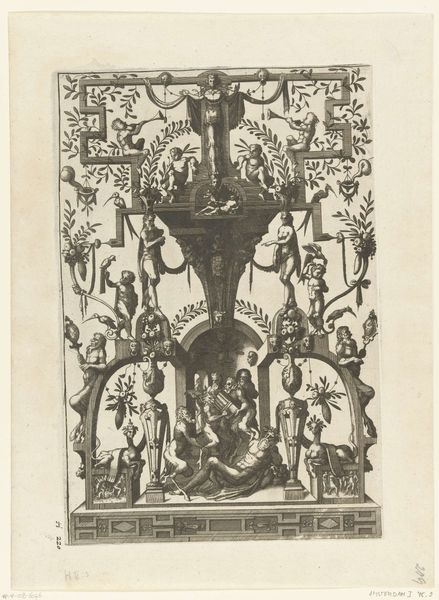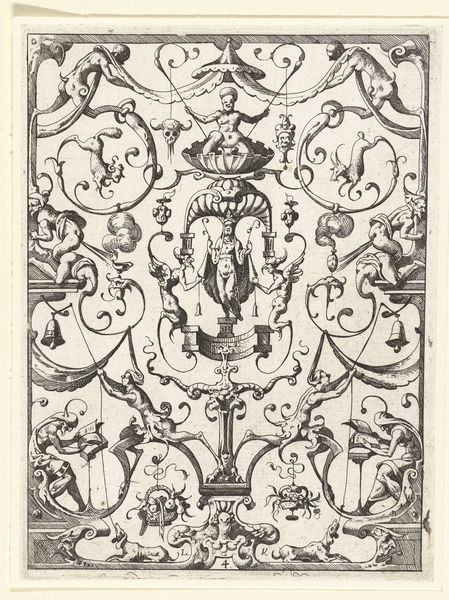
Dimensions: height 79 mm, width 64 mm
Copyright: Rijks Museum: Open Domain
Editor: So, this engraving, "Juno met pauw aan haar voeten" by Etienne Delaune, dating back to the late 16th century, features a central figure of Juno. What strikes me is the almost overwhelming detail. What can you tell me about this print? Curator: It is fascinating to consider Delaune’s print in terms of its production. Engraving in the Renaissance wasn't merely about representation, but also about skilled labor, commerce and the burgeoning market for art. Look at the *CVM PRIVILEGIO REGIS*, the “privilege of the King”, essentially copyright. How might this detail speak to ideas around ownership and access? Editor: I guess it means only certain workshops can reproduce this print... How did this privilege shape art production? Curator: Exactly. It highlights how artistic creation was deeply embedded in social and economic structures. Access to materials, workshops, the patronage system, and the market itself all played key roles. The availability and control of materials like the metal plates for the engraving shaped what artists could produce. Do you think the materials have bearing on the artwork? Editor: Absolutely! The permanence and detail possible with engraving materials really enabled this type of reproductive printmaking to become more available. And it emphasizes line and detail rather than shading. Thinking about labor and tools really opens this up! Curator: Indeed. By shifting our focus from just the iconography of Juno to the act of production and circulation, we see art as an outcome of specific social practices and technological capabilities, a valuable materialist approach, don’t you agree? Editor: I definitely agree. I see so much more in the work now, thinking about Renaissance workshops and the king's role in the marketplace!
Comments
No comments
Be the first to comment and join the conversation on the ultimate creative platform.
